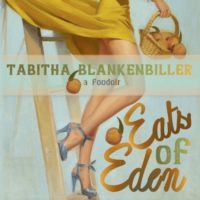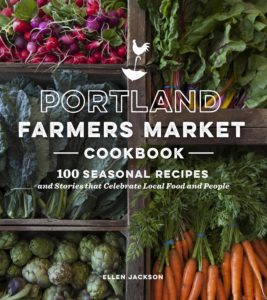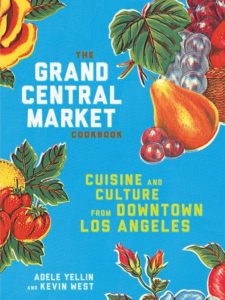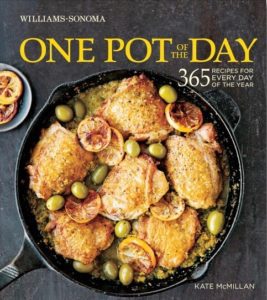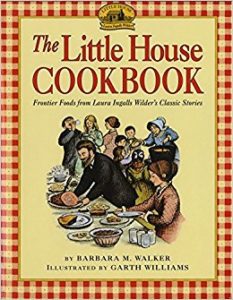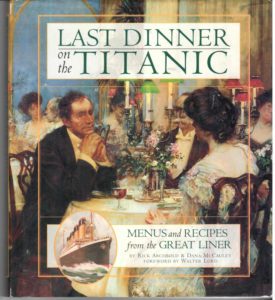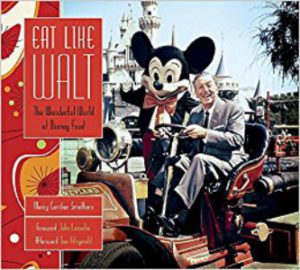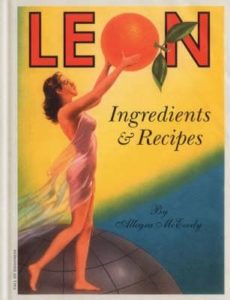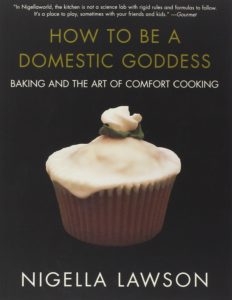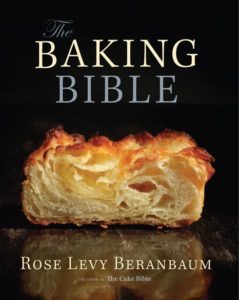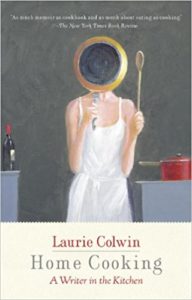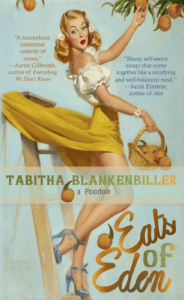I have a confession. When I’m alone in a bookstore and not concerned with proving to a companion that I know which new novel has the most deafening Twitterbuzz or that I’ve read every O. Henry prize winner from the past twenty years, here is what I do. I walk past all categories of literature and nest myself as deep into the cookbook section as the shelves will delve. This isn’t a new habit I picked up, but one I remember from my earliest memory glimmers of visiting the library. I layered my stacks of picture books and short chapter paperbacks with musty copies of Cooking the German Way and Recipes for Holidays.
Between the ingredient lists and final product illustrations were snippets of stories—the supposed history of French toast, or a love letter to the citrus trees in the writer’s backyard. I found at that earliest age the most generous of memoirs, not only offering glimpses into another life, but also the instructions on how to eat like another person, in another place, of another time. I loved and continue to love the cookbook for the same reason I still feel a flutter of excitement walking into an airport. Each volume is a ticket into an immersive opportunity for new dishes, new ingredients, new love.
With the wealth of Pinterest and AllRecipes now, there’s an argument against the hardback cookbook’s relevancy, in which case I ask, have you ever held one? A single perspective over what quickly becomes the exhaustive, overwhelming deluge of every recipe ever attempted from a box. The cookbook allows you to breathe and focus in on a single technique, or region, or person’s preference. I can’t resist the individuality of these books, the confluence of design and image and vision, the utter beauty of a starch-new cookbook. The intimacy I feel when I inevitably splatter the sauces it dictates onto those perfect pages, forever evidence that yes, I tried.
Back when I was a kid at the library, these possibilities were dreams, lacking the skill and freedom to reconstruct the colonial Chicken Pudding from Felicity’s American Girl Cook Book. I absorbed the stories and resolved, Someday, I’m going to make that. And with any of these favorites, that’s exactly what you can do, too.
***
Portland Farmers Market Cookbook by Ellen Jackson (Sasquatch Books)
The Portland Farmers Market is Paris. At least, it is what I imagined Paris to be until I visited the city for the first time last fall and confirmed that yes, the Portland Farmers Market is our West Coast American Paris. Every Saturday year-round the market takes up the city park blocks serving up exactly zero market filler. No kettle corn stirrers, no goat soap makers. The vegetables are edible mosaics, ever-shifting tableaus reflecting what is fresh right this second in the Pacific Northwest. Similarly, this cookbook is a collaboration of recipes from all the vendors that pitch their tents for the city’s pleasure each week, giving the book the effect of asking each purveyor in-person, “So what exactly should I do with this?” The English Pea and White Bean Salad with Spring Herb Chimichurri is pure seasonal affectedness disorder therapy.
The Grand Central Market Cookbook by Adele Yellin and Kevin West (Clarkson Potter)
When I was at the AWP writer’s conference in Los Angeles a few years back, I got sick. Deliriously sick. And yet, in denial that I was about to fall over. I just needed to sit down for a minute, I kept telling myself. Dangle my feet in the jacuzzi. Have something good to eat. That would fix me right up.
So when I was scrolling through my Instagram feed at the hotel, debatably conscious, and saw fellow writer Michele Filgrate’s post of an oozing Eggslut sandwich, my first thought was, I just need one of those. Fifteen minutes later I was in some unfortunate man’s Uber heading to Grand Central Market, a wonderland I hadn’t known existed until I was lost in it, trying to pick out mole paste and McConnell’s ice cream flavors with a fever. I wandered around in the neon-capped forest of grab-and-go dishes and exquisite ingredients for a few hours, confused but nevertheless delighted. I vowed to eventually return when I could eat more—and stand up straight.
Fortunately for me, they recently released The Grand Central Market Cookbook, which like my local market book, brings recipes from the tenant vendors home. It also tells the story of the market’s resurrection from near-ruin coinciding with the revitalization of downtown LA, which is fascinating and heartening in a way that is in short supply. I recently made the Tacos Al Pastor from Tacos Tumbras a Tomas, and they broke my heart open with brightness. And it has an oilcloth cover. An oilcloth cover. I pull it off my bookshelf for the sole purpose of caressing.
One Pot of the Day by Kate McMillan (Weldon Owen)
These “Of the Day” cookbooks can be found in a series at Williams-Sonoma, but my far-and-away favorite is the One Pot Meal version. There is no better friend to the working writer than a one pot meal. One pot to keep an eye on, one pot to clean. The gimmick is that each day of the year has a different recipe you can try. Today? Macaroni with Farmstead Cheddar and Bacon (ummm….yeah, okay). It’s also helpful to flip around the current month for seasonal inspiration. The Chicken with Beans, Bacon and Cheddar cooked in a cast iron skillet has been a salty textural delight for all the years I’ve owned this, but from basics (shepherd’s pie) to new inspiration (slow-cooked Cuban chicken), it’s yet to steer me wrong. And my husband Matt is still aspiring to start a blog where we make each dish for a full year, although I’ve tried to break it gently to him that that Julie and Julia ship has long sailed.
The Little House Cookbook by Barbara M. Walker (Harper-Collins)
Obviously I wasn’t the only girl growing up and returning to the Farmer Boy installment of The Little House series over and over, always with the same question: “Mom, why can’t we have food like Almanzo?” The descriptions of Laura’s eventual husband were pornographic:
Father’s spoon cut deep into the chicken-pie; he scooped out big pieces of thick crust and turned up their fluffy yellow under-sides on the plate. He poured gravy over them; he dipped up big pieces of tender chicken, dark meat and white meat sliding from the bones, He added a mound of baked beans and topped it with a quivering slice of fat pork. At the edge of the plate he piled dark-red beet pickles… Silently Almanzo ate it all. Then he ate a piece of pumpkin pie, and he felt very full inside. But he ate a piece of apple pie with cheese.
“We aren’t farmers,” my mom tried to explain. “Our hearts would stop if we ate like that every day.” Why weren’t the descriptions of ranch-handling sinking into my brain along with that quivering pork?
Walker’s exhaustively researched cookbook is a tribute to every Little House fan with Ma’s big woods griddle cakes stamped on her heart. She includes the descriptions and illustrations we remember so vividly from childhood, along with recipes based on existing records and fading memory of the time. For this reason the recipes tend to be simple with little in the way of seasoning or fresh ingredients. It’s the kind of cookbook that I love to read for what it makes me remember, and then inspires me to find a more modern day interpretation of an old fascination (trading out some lardons for that slab of prairie salt pork).
Last Dinner on the Titanic by Rick Archbold and Dana McCauley (Hyperion)
Speaking of childhood obsessions, I was twelve when Titanic was released in theaters and ripe for fangirldom. And sure, I had a shoebox full of Leonardo DiCaprio magazine clippings, but I was just as creepily enthralled by the history of the Titanic and all the strange luxury and doom it encapsulated. Is there anything better for a lonely teenage girl than luxury and doom? As this cookbook proves, fuck no.
This cookbook is a trip. I’m still not sure who it’s written for, aside from the morbidly curious. “Many weeks before the day,” it instructions in the “Choreographing a First Class Titanic Dinner” chapter, “send out handwritten, formal invitations.”
“Unless there’s a trumpet player in your immediate circle, announce the dinner with the ringing of a gong.”
But the photos and ephemera of the restaurants created on the ship are riveting, and the history of eating in the Edwardian era sucks me in every time I open it. And as far as the recipes go, the steerage passenger menu is the best-looking contemporary gastropub fare you’ll find.
Eat Like Walt: The Wonderful World of Disney Food by Marcy Carriker Smothers (Disney Editions)
Another one for those of us loving stories with a side of food, I’m in love with this history of Disney restaurants telling the midcentury story of Disney Studios, Disneyland, and Walt Disney himself. Although the man had a simple palate, he had a keen understanding of food’s importance in crafting an immersive, sensory experience at his theme park. It was also vital to Disneyland’s early funding and sustainability (building a theme park from scratch isn’t cheap). The menus and early dining concepts put the current iteration of the park in perspective, allowing us to see what has developed and what has endured. RIP, Tahitian Terrace! Long Live the Dole Whip Stand! Perhaps most important of all, this book includes the iconic Blue Bayou Monte Cristo Sandwich that has been on the menu for decades, with the full recipe included for us Disneyphiles who don’t live in Orange County.
LEON: Ingredients and Recipes by Allegra McEvedy (Octopus Books)
I cannot conceive of a more beautiful book than this, a cookbook inspired by a restaurant in London dedicated to “naturally fast food.” But that introduction limits the scope of the book, which is massive. LEON defines and explains the stories behind all of their favorite ingredients, which are basically every fruit and vegetable and legume and dairy product the planet offers us. Cooking and growing tips are offered, along with their history in human civilization. There is a full map of British cheeses you can take out of the pocket and tack on the wall. There are stickers. An interactive pantry fold-out. Imagine if Good Eats was a cookbook, but not a cookbook that featured Alton Brown being a pompous asshole. The latter half of the book features the restaurant’s most popular recipes, with my favorite being the one sheet pan John & Kate’s (not too) Spicy Chicken Couscous. The photography makes me weepy. I want to be buried with this book.
How to Be a Domestic Goddess by Nigella Lawson (Hachette)
I remember seeing Nigella Lawson’s show on Food Network in my first apartment, when we could barely afford expanded basic cable, let alone the rundown one-bedroom unit miles outside of Portland. This was in the days before Guy’s Grocery Games and Cupcake Wars, when the channel was actually trying to teach you how to properly cook a dish. Even then, they kept Lawson’s genius on the strange odd-hours, late at night, or fresh off of infomercial filler on Saturday mornings. Maybe they feared she was too British, what with her Gjetost cheese and “biscuits.” But whenever I caught her, in between college classes and shifts at Frederick’s of Hollywood, my breath caught in my chest. Her accent, her Snow White hair. Those lips. The way she’d put on her bathrobe and slip into the kitchen for a last bite out of the fridge. She made food seem sensual not as a gimmick (is there anything grosser than a Chopped contestant talking about his sexy food seducing Alex Guarnaschelli?), but as an effortless extension of her love for it.
Years later, when a friend gifted me her book for Christmas, I fell in love with her affectionate voice on the page. She loves to bake and adopt recipes from friends and those she admires, including legendary food writer Laurie Colwin. She weaves all the food love together into The Real Deal. And last winter when I was snowed in, I made her recipe for Cheese Danishes three times over. She knows how to keep a girl warm.
The Baking Bible by Rose Levy Beranbaum (Houghton Mifflin Harcourt)
After falling head-over-heels in love with The Great British Baking Show, I did what all fans of the phenomenon do—went on a gluten-happy bread and cake rampage. I was in the market for a good, comprehensive baking book that would cover some of my favorites like fruity tarts and crumble bars, along with things I’d never been brave enough to try on my own that tempted from the Technical Challenge like Kouign–Amann. The Baking Bible came highly recommended, and now I highly recommend it to you. Each recipe is extensively researched with an explanation reminiscent of Cook’s Illustrated Magazine, breaking down components and techniques, but never needlessly complicated. Beranbaum makes a concentrated effort to present the most accessible, yet quality and delicious, version of each project she attempts. I was never as proud as the day I brought her Luxury Oatmeal Cookies and Lemon Cream Cheese Butter Cake to the Portland ACLU Sweet Bites for Civil Rights bake sale.
Home Cooking: A Writer in the Kitchen by Laurie Colwin (Vintage Contemporaries)
I read Laurie Colwin’s cookbook-in-essays when I was at Peak MFA Candidate Snob (so right around second or third semester). I was, for the first time in my life, fully immersed in the literary world and its possibilities. I had new friends and mentors to impress and very little to show in the way of actual achievements, so I covered up my inadequacy by being a real asshole about what constituted A True Book and what didn’t. If your memoir included recipes, I thought, it was not A True Book. Real books were about death and emotional masochism. They didn’t include Cracker Jack prize recipes. I read it with my eyes set in a perpetual roll, refusing to absorb Colwin’s undeniable craft mastery and warm, precise voice. I gave away my copy before making the Black Cake, even though her mysterious, holy descriptions of its dense flavors and complex developments have never left me. I missed out on learning from her, which was stupid.
Maybe if I’d been open to her style and grace, I wouldn’t have avoided writing about what I loved for so many years. Maybe I wouldn’t have had as many failures attempting to create something that I guessed was what the literary world wanted from me rather than what I would naturally pick up and read. Maybe I can urge you to be wiser than I was, and include her so-much-more-than-a-cookbook on your shelf alongside any and all death and emotional masochism tomes.
And to close out this delectable list, we had to include Tabitha’s very own debut “foodoir”!
Eats of Eden by Tabitha Blankenbiller (Alternating Current Press)
Luckily for us, Tabitha did decide A True Book could include recipes. On March 6, 2018, her memoir-in-essays on food, writing, coming-of-age, family, sex, self-esteem, and above all, overcoming personal odds to live your best life will be released from Alternating Current Press—complete with recipes that will change your relationship with food forever. Eats of Eden follows a year of attempting to write a novel, and the daily life, occasional revelations and passions that feed, distract, complicate, and enrich that process—in the author’s case, constant detours into the kitchen. It’s a book about writing, eating, and surviving in the modern west, from literary hustling at the Doug Fir Lounge, to waiting for life-altering emails around a stew-cooking campfire at Crater Lake. And get ready for a special Rumpus Letter in the Mail and signed Eats of Eden giveaway from Tabitha in April!
